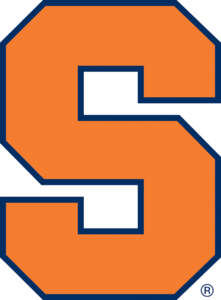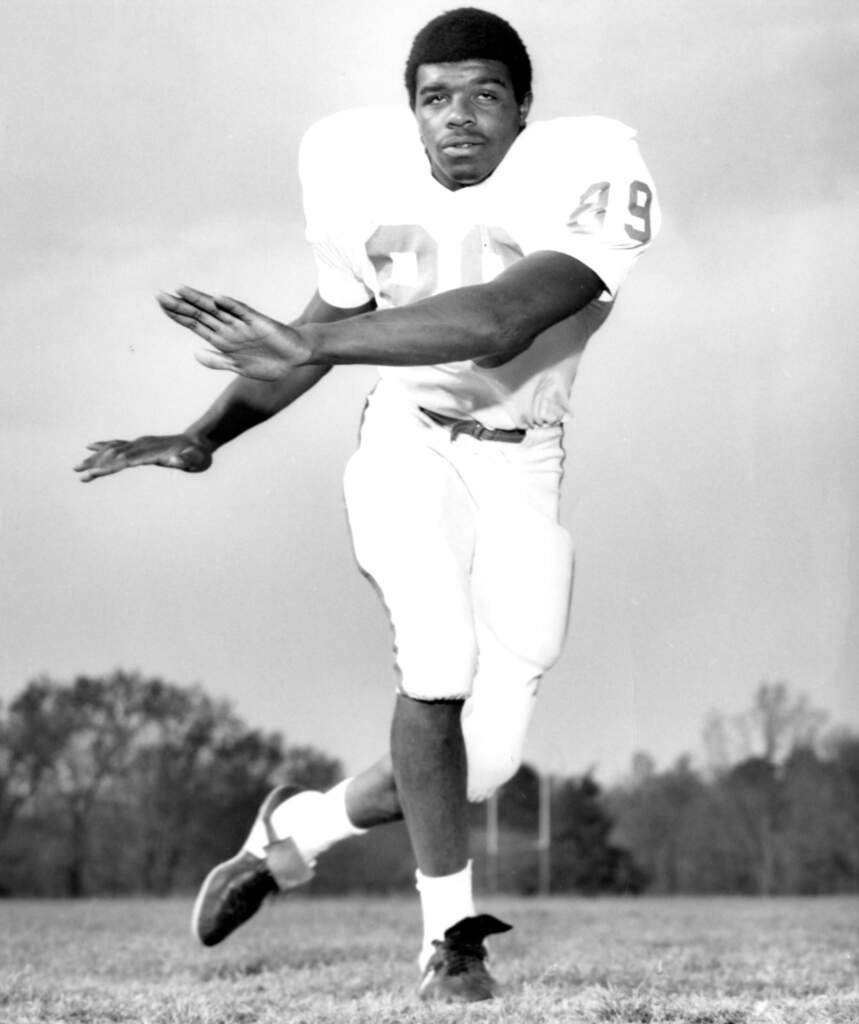Oct. 14, 2010
Head Coach Frank Howard knew he had a “Dream Backfield” on Saturday afternoon, September 30, 1950 in Columbia, MO when his underdog Clemson football team played near perfect ball in defeating Missouri by a score of 34-0.
Clemson had three 100-yard rushers in the dominating victory, as Jackie Calvert had 175, Ray Mathews totaled 120, and Fred Cone had 111. It was actually the second consecutive game that the Tigers had three 100-yard rushers, as the same trio had accomplished the feat the previous week against Presbyterian College. These were the first two games on record that Clemson had three 100-yard rushers.
However, this was not Presbyterian College, this was #17 Missouri. It was Clemson’s highest-ranked win since the 1940 Cotton Bowl victory over #11 Boston College.
On the hour-long bus ride from Missouri’s stadium to the Saint Louis airport, where Clemson’s chartered plane was waiting to whisk his triumphant Tigers home via Anderson’s airport, Howard made this observation to the only South Carolina reporter covering the game. “Brent, I believe we could have beaten any team in the country the way we played today.”
I did not dispute his words, for I was equally in awe of what Howard’s Tigers had just accomplished against a good Dan Faurot-coached team. Faurot, the father of the Split-T offense, had not fielded a team unable to score in years. He went on to be inducted into the College Football Hall of Fame.
Clemson’s “Nightmare Line” of 1949 had given way to defensive and offensive platoons that outscored their first three opponents by a combined score of 115-0 to open the 1950 season. A 41-0 rout of Auburn to end the regular season gave Clemson its fourth shutout. Including the narrow 15-14 Orange Bowl win over Miami (FL) on January 1, 1951, the once-called “Nightmare Lines” contributed mightily to a 9-0-1 team record that outscored its opposition 343-76, or by an average score of 34-8.
Only John Heisman’s 1900 and 1901 Clemson teams, that averaged 37 and 38 points, respectively, in compiling 6-0 and 3-1-1 records, along with Tommy Bowden’s 2000 team, that averaged 34.5 points per game with a 9-3 record and #16 AP ranking that sent Offensive Coordinator Rich Rodriguez on to head-coaching prominence at West Virginia and Michigan, proved more prolific in scoring.
In two other offensive statistical categories, Howard’s “Dream Backfield” of 1950 averaged 6.2 yards per play, including 5.3 yards per carry. Only Bowden’s 2006 team, with its “Thunder & Lightning” combination in the form of James Davis and C.J. Spiller, has surpassed these marks with 6.5 yards per play, including 5.7 yards per carry.
The remarkable fact about Clemson’s “Dream Backfield” of 1950 (Jackie Calvert at tailback, Ray Mathews at wingback, Fred Cone at fullback, Dick Hendley at blocking back) is that it was a work in progress right up to the season-opener against the Blue Hose.
All four lettered in 1948, 1949, and 1950, with Hendley and Mathews also seeing enough action in 1946 and 1947, respectively, to earn their first varsity letters. Cone and Mathews were starters on the 1948 undefeated team alongside All-America tailback Bobby Gage and team captain and blocking back Bob Martin.
The 1949 team, without Gage and Martin, moved Calvert and Mathews around between tailback and wingback, while Hendley (the grandfather of 2009 U.S. Open Golf Champion Lucas Glover) shared the blocking-back post on occasion with Wyndie Wyndham, possibly Clemson’s finest linebacker of all-time. Cone remained at fullback throughout. These “Dream” backs performed well on defense as well, though by 1950 it was rare they were summoned to do so.
Credit Offensive Backfield Coach Covington (Goat) McMillan with the resolve that enabled the four senior backs of 1950 to become Howard’s “Dream Backfield.” He had the four working out together whenever possible in the summer of 1950, perfecting the intricacies of the single-wing offense. His enthusiasm, familiarity with the single wing, and many successes at Clemson, both as player (1928-30) and coach (1937-42,45-50), enabled him to win the respect of his backs.
McMillan and his end-coaching colleague, Bob Jones, both had the good fortune of learning their football from Tiger Head Coach Josh Cody (1927-30) and his versatile staff that included NFL Hall of Famer Joe Guyon and future UCLA coaching great Red Sanders. Sanders later served as head coach of UCLA’s 1954 National Championship team, the only Bruin team to win a national title on the gridiron.
The all-senior backfield made room for 1948 freshman sensation Billy Hair briefly in the first half of the 1950 season. Hair had been declared academically ineligible in 1949, but he worked with the senior backs on single-wing intricacies in the summer of 1950 while attending summer school. This paid off in the final five games of the season.
Following a disappointing 14-14 tie against South Carolina on “Big Thursday,” Clemson faced #17 Wake Forest on the road. The Demon Deacons had trounced the Tigers 35-21 the year before at Clemson and seemed intent on duplicating their performance when they knocked both Mathews and Cone out of action in the first quarter with rib injuries.
Team leadership rose to the occasion, as subs Jim Shirley (fullback) and Frank Kennedy (wingback) made key plays. Calvert also filled in at wingback while Hair took his place at tailback. Calvert also played safety on defense at a critical moment of the game, which Clemson won 13-12.
For the remainder of the season, Calvert, in the midst of a record year at tailback, returned to wingback in place of the injured Mathews, while Hair, who had never worked at wingback, took over at tailback. His 525 yards on 71 carries, the most in the final five games of 1950, gave him a 7.4-yard season average that remains best in Tiger history. Even so, Calvert’s 1950 stats of 663 yards on 105 carries for a 6.3-yard average is sixth-best in history. Mathews’ 728 yards on 118 carries in 1949 for a 6.2-yard average is seventh-best.
In their careers at Clemson, Cone, Mathews, and Hair are among the top-25 running backs in history. Cone is fifth in touchdowns (31), Mathews’ 5.7 yards per carry is tied for second, and Mathews is 10th in all-purpose yardage.
As for single-wing perfection in 1950, there was probably never a better display than in the first six minutes of the second half against Boston College, a team that had beaten the Tigers 40-27 in 1949.
Cone, back in action after his rib injury, returned the kickoff from the three to the 32. On the first play from scrimmage, Hair bootlegged the ball on a naked reverse 68 yards for a touchdown.
On the first play from scrimmage after Boston College had returned the kickoff to its own 30, tackle Bob Patton recovered an Eagle fumble. After a 10-yard loss by Calvert at wingback and an incomplete pass by Hair, the rookie tailback rushed for 17 yards on third down and passed for 18 more to Cone on fourth down. Hair then carried 11 yards for another first down and handed off twice to Cone for a second score.
A minute later, Boston College gambled and failed on a fourth-down play at midfield. Cone then bulled his way for 11 yards and a first down, aggravating his rib cage in the process. After backup fullback Marion Thompson gained five yards, Calvert passed the final 31 yards to end Bob Hudson for the third third-quarter touchdown.
Thirty seconds later, the hometown Eagles again fumbled on their first play from scrimmage. Guard Barclay Crawford recovered for Clemson on the Eagle 29. On the Tigers’ first play, Calvert dropped back to pass, spotted an open Glenn Smith, and threw a strike to complete the “Dream Backfield’s” remarkable six-minute exhibition. Clemson went on to a 35-14 victory.
Ironically, the play of the game, a second quarter 96-yard punt return by Calvert, who seemingly dodged every Boston College player at least once before being forced out on the Eagle two, was called back for a roughing-the-punter penalty called on Calvert’s brother, Jim. It would be the longest punt return in school history to this day if it had stood.
Eagle Head Coach Denny Myers accused Howard of running up the score on him in a television interview after the game. Boston College had scored the last 14 points of the contest and the “Dream Backfield” had been on the bench during most of the second half.
The Tigers finished the season with the 15-14 victory over Miami in the 1951 Orange Bowl. That game was won in thrilling fashion, as Sterling Smith tackled Frank Smith in the endzone for a safety with just over two minutes left, giving the Tigers the one-point victory.
Clemson finished with a 9-0-1 record, including two road wins over top-20 squads, the only team in Clemson history to accomplish that feat, and a #10 ranking in the final AP poll, the first top-10 final ranking in school history. It was Clemson’s second undefeated season in three years, as the 1948 team had an 11-0 record.
While there were many talented players on those Tiger teams, the “Dream Backfield” stands out and might be the most productive backfield in school history when you take into account yards per play and victories.
 Duke
Duke 
 Florida State
Florida State  Louisville
Louisville  Furman
Furman  South Carolina
South Carolina  LSU
LSU  Troy
Troy  Georgia Tech
Georgia Tech  Syracuse
Syracuse  North Carolina
North Carolina  Boston College
Boston College  SMU
SMU 





